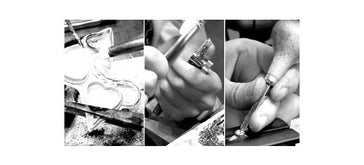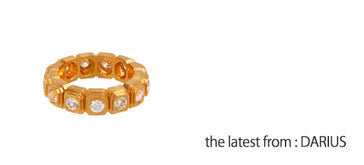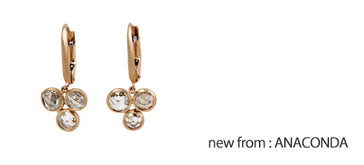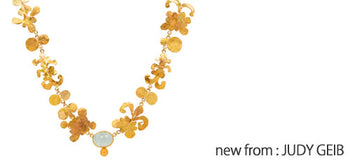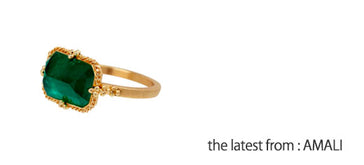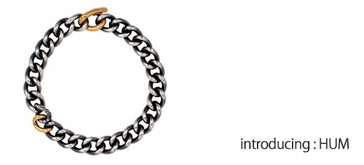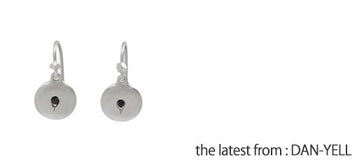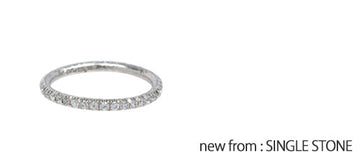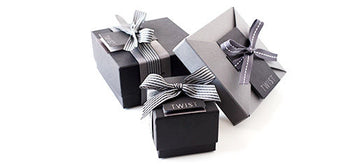Pearls:
Considered nature's own gemstone, pearls are produced within the soft tissue of a living shelled mollusk after being implanted (or 'cultured') with a nucleated bead. After the bead is placed within the mollusk, the nacre forms in concentric layers around it thus producing a pearl.
Size, shape, color, quality of surface, orient and luster are the categories in which a pearl is graded.
nacre:
The iridescent composite material created by mollusks which makes up a pearl. It is very strong and resilient.
natural pearl:
Created spontaneously in nature without any human intervention. These are incredibly rare and extremely expensive.
They form when a particle or other foreign object is introduced to the sensitive mantle tissue inside of the mollusk. To defend itself, layer upon layer of nacre - semi-opaque layers of calcium carbonate - surrounds the foreign substance and creates the pearl.
cultured / farmed pearl:
These pearls are formed the same way as a natural pearl, however the 'culturing' occurs when humans insert tiny particles into the mollusk to create the pearl.
Freshwater cultured pearls grow within a freshwater mussel, usually in lakes, rivers or ponds.
Saltwater or marine pearls grow within pearl oysters and are usually kept in protected saltwater lagoons.
types of cultured / farmed pearls:
keshi pearls:
These are smaller pearls - usually just a few millimeters - and are sometimes irregular in shape. They are made entirely of nacre and do not have a nucleus.
tahitian pearls:
These pearls are formed within the black lip oyster found in the blue lagoons of French Polynesia. Because these oysters can only be nucleated with one pearl at a time, they are rarer. The colors range in shades of dark blue, green, aubergine, gray, silver, purple or peacock.
baroque pearls:
A pearl with an irregular shape. The most valuable of these pearls are the Baroque South Sea or Tahitian pearls.
akoya pearls:
Commonly known as saltwater pearls, these pearls are cultured in the akoya oyster generally found in Japan and China. This is the 'classic' round pearl usually between 2mm - 11mm.
south sea pearls:
These stunning pearls are the largest and rarest. They are cultured in the warm waters of the South Sea near Austrailia, Indonesia, the Phillipines and Thailand. They range in size from 9mm - 20mm and are known for their soft, inner glow and luminous shades of white and golden yellow.
types of pearl necklaces:
collar:
Sitting directly against the throat and not hanging down the neck, this length ranges from 10 - 13 inches / 25 - 33cm long.
choker:
Nestling just at the base of the neck, the classic choker measures between 14 - 16 inches / 35 - 41cm and is considered the most versatile length.
princess:
Named after the strand length often worn by Princess Grace, this length can range from 17 - 19 inches / 43 - 48cm and falls just below the collar bone. It suits a high neckline as well as a round, plunging or v-neck.
matinee:
This strand encircles the neck and falls just above the breasts. Sophisticated and perfect for casual or business attire, it is usually 20 - 24 inches / 50 - 60 cm long.
opera:
Refined and lovely when worn with a high neckline, this length is between 28 - 35 inches / 70 - 90 cm long.
rope:
Versatile and interesting because it can be wrapped around the neck for a multi-strand look, the length is anything over 45 inches / 115 cm.

